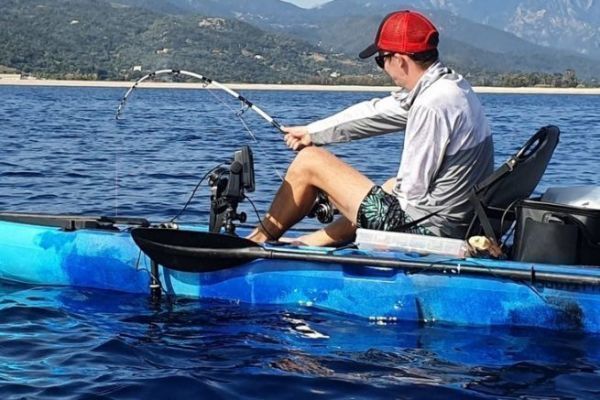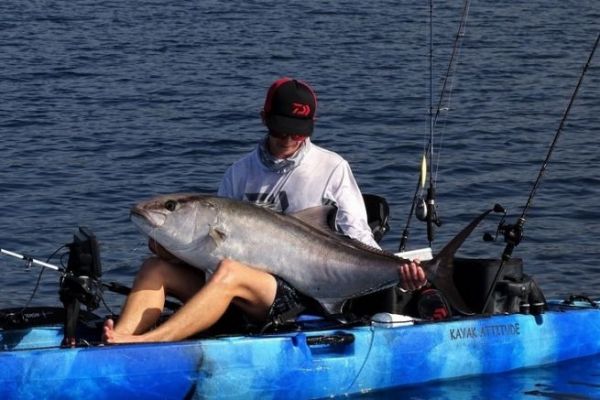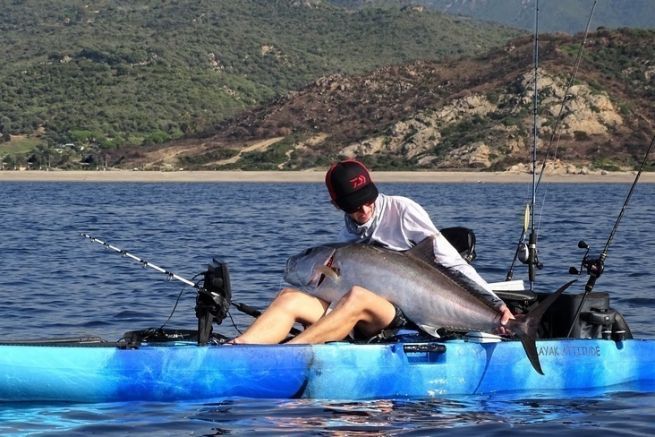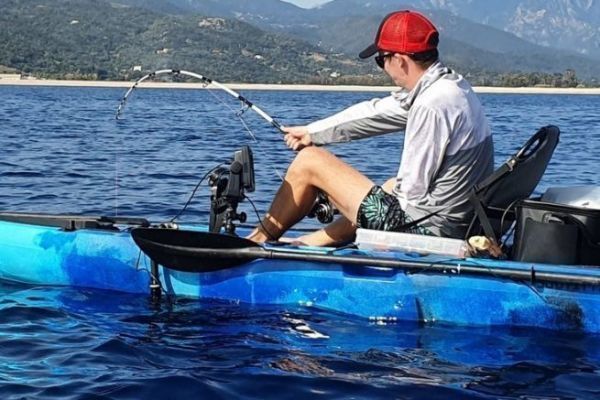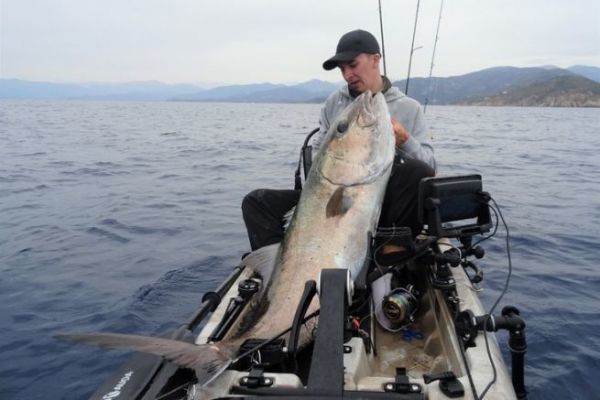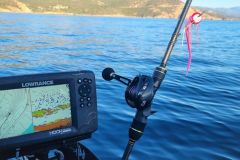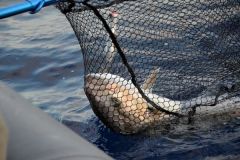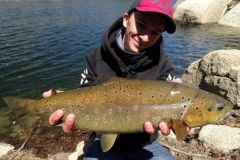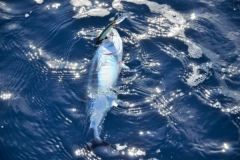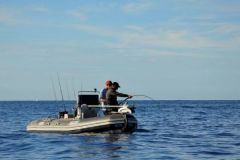Successful capture of a live animal
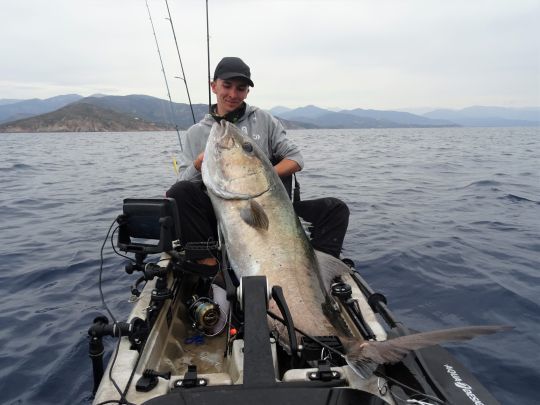
Fishing for big fish such as tuna and amberjack is not necessarily done with livebait, but it is obviously the most efficient technique. Small pelagic fish such as tuna and bonito are the most popular. To catch them as quickly as possible, the ideal is to troll with one or two rods.
We generally use small swimming fish of 7 to 9 cm which emit a lot of vibrations in the water and are therefore easily spotted. It is necessary to try to imitate as much as possible a small anchovy in distress and thus to use natural colors like blue, white and silver.
The trolling speed should be as fast as possible, without tiring your muscles. A good trolling speed is between 2.5 and 3.5 knots depending on your physical abilities and the model of pedal on your kayak. A 7-28g rod and a reel fitted with 13-hundredths braid, finished with a 26-hundredths leader will do the trick.
The small equipment needed
Fishing for big fish requires a little organization, it is the key to success and above all, it allows you to avoid unpleasant surprises once in combat.
The hooks to be used must imperatively be strong of iron, in sizes adapted to that of the live ones. A hook that is too big will be too visible, while a hook that is too small may not bite on contact. Prepare one or two sinkers of 150 to 250g and some rubber bands to fix them on the line.
Inflatable balloons can be used to move fish away from the kayak under certain conditions, but it's best to do so as little as possible. If your line is too far from the kayak, the fish may have too much ease in reaching the bottom and break your rig by rubbing against it. You'll also need a small pliers to unhook the livebait from the trolling lure and a stronger one to unhook the big fish.
The rod and reel set
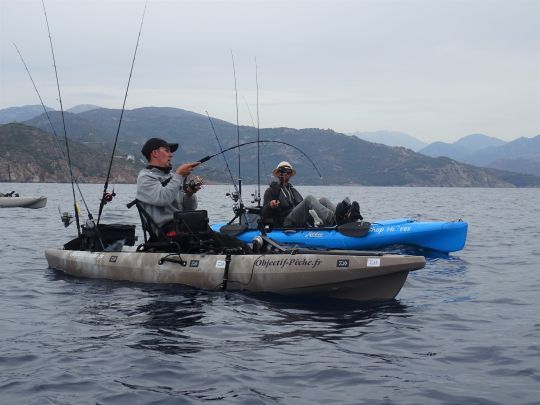
Fighting a fish weighing more than 20 kg in a kayak is not easy and that's what makes it so attractive. First of all, you will have to use a rod with a particular length, you must be able to go around the nose of the kayak when the rod is loaded.
I personally use a 1m85 rod, long enough for the distance to the nose of my kayak. Choose a rather stiff rod, a rod that is too soft does not allow you to pump properly in a kayak since the sitting position limits the amplitude that you can have.
A reel with a large braid reserve offers extra security for fish that are capable of emptying more than 200 yards if you're not used to it. A low ratio also allows for less effort when reeling with the rod loaded, although you will lose power during a hard fight.
